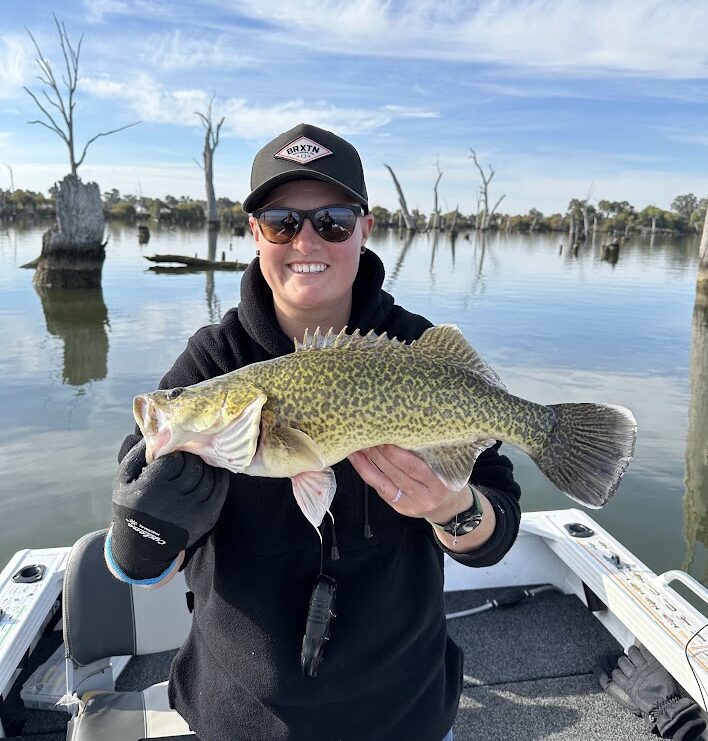About the species
Sometimes known as the ‘Mighty Murray cod’ and other times the elusive ‘Goodoo’ this is a species on most fisho’s bucket list. While the magic metre is the target for many, catching any of these implosion feeders is a thrill.
Murray cod are a freshwater species, found throughout the Murray-Darling Basin in both lakes and rivers. They inhabit a range of waters, from clear flowing rocky streams, to the murky backwaters and lagoons of meandering rivers. Murray cod are Victoria’s largest freshwater fish.
Know before you go
Murray cod are subject to a closed season from the 1st of September until the 30th of November inclusive, except for a few prescribed waterways: Lake Eildon, Lake Eppalock, Cairn Curran, Lake Nillahcootie, the basins of Millicent and Wimmera, Arcadia pondage, and waters south of the Great Dividing Range except the Yarra River.
The closed season is enforced annually to protect Murray cod during their breeding season. Research has shown that Murray cod swim kilometers upstream to lay their eggs on a snag. During this time, the male stays on the nest and fans the eggs with his fins. If disturbed, the nest may be abandoned leading to the loss of the eggs for that season. As such, it’s important not to target cod during the closed season. If you are still seeking to catch a Murray Cod during the closed months, stocking and conditions make it safe to fish in the open impoundments.
There is a slot limit for Murray Cod between 55cm and 75cm. This limit was introduced in 2014 after overfishing resulted in dangerously low populations of Murray Cod.
If you plan to target Murray Cod, please check out this video Better Handling for Murray Cod which contains a detailed guide on how to safely handle these beautiful fish to protect them moving forward.
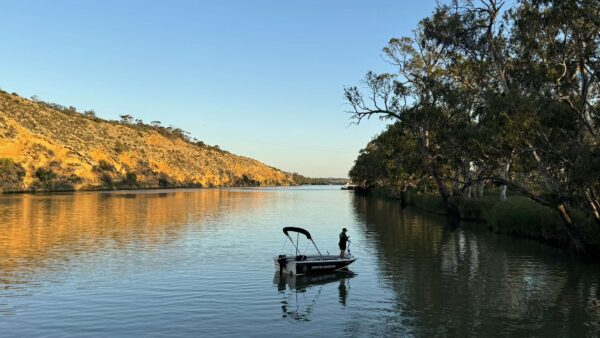
Where to start
With such a vast area inhabited by Murray Cod, there really are options everywhere. Popular destinations include Lake Eildon, Lake Eppalock, the Goulburn River, Nagambie lakes, Lake Hume and Rocklands Reservoir. The Murray River and Lake Mulwala on the border are also solid fisheries but are governed by New South Wales. Be sure you have the right license and check out NSW Fisheries if you’re planning a trip.
During the day, cod tend to sit close to the snags, hiding among timber and rocks for cover, or along the edges of deeper channels where they have cover. Cod are ambush predators and prefer to hide in the shaded areas during daylight hours where they have an advantage. Look for areas with structure when picking a fishing spot and areas where there is shade on the water or where a snag creates a shadow, particularly in warmer months.
At night, cod will patrol for food sources using the cover of darkness. Low light periods are important if you are pre-planning your fishing sessions, as the change of light can trigger a bite window. Cod will also work their way along flat banks that hold baitfish in search of a feed at night.
Over the winter months, smaller Cod will not feed as often, however larger fish still need food to maintain condition over winter. Warmer temperatures often attract higher catch rates, but winter fishing can produce some true giants if you dare to brave the elements.
The set up
Murray cod have a big initial bite being implosion feeders. A typical cod bite will have the fish immediately turn back towards its snag.
A 5-10 kg rod is a good starting range for targeting cod. Its personal preference on whether to use a spin reel or a baitcaster. Whilst a baitcaster takes more practice and fine tuning, the benefits are in the casting accuracy when aiming to get a lure tight among the snags. A 4000 size spin reel is a good option and a 200 or 300 sized baitcaster depending on the lure weights you are aiming to cast. It’s good to have the stopping power of these size reels to avoid your lure of bait being dragging into the snags or unnecessarily tiring out a Murray cod.
30-50lb braid is recommended for both stopping power and breaking resistance to rubbing against snags. A rod length to a rod length and a half of fluorocarbon leader between 30-60lb is also important for snag resistance. Good knot strength is a must with cod fishing. An FG knot or an improved Albright are good braid to leader knots and a uni knot or a lefty’s loop knot are great options for attaching lures and terminal tackle.
The Bait Rig
The preferred bait rig for Murray cod is a running sinker. The right weight for your sinker is the lightest you can use and still hold the sinker on the bottom. If fishing in rivers, try to use a bean sinker rather than a ball so it is less likely to roll in the current, this will allow for a lighter weight.
Run your leader through the sinker and attach a swivel with a uni knot. Attach a second length of fluorocarbon leader to the other end of the swivel, about 40cm long. At the end of this length, called a trace, attach a hook. Hook sizes between a 5/0 and 10/0 are suitable depending on bait size. Circle hooks are preferred as they tend to self set in the corner of the mouth, reduce gut hooking and the risk of injuring or killing the cod.
As for bait, there are many options. Traditional baits are bardi grubs, scrub worms, shrimp and yabbies however raw chicken and cheese also work well. There’s a massive range of non-traditional baits and many a cod fisho will tell you they have a secret recipe. I have heard of hot dogs, dim sims, cheese kransky and fried chicken all resulting in great success. Ultimately these contain fats that attract shrimp and other bait resulting in cod feeding. Catching your own shrimp and yabbies to use as bait is also an enjoyable experience.
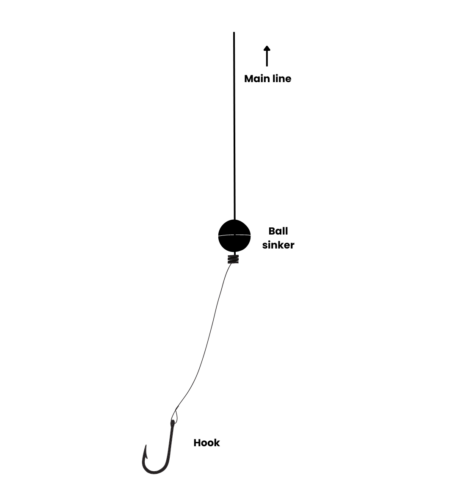
A running sinker rig for bait fishing
Targeting Cod on Lures
Lures are my go-to for targeting Murray cod. With cod sitting tight into snags, it is satisfying casting lures into pockets behind trees and hard against the bank then retrieving them along a snag in hopes of enticing a cod into eating my presentation.
Casting a lure gives you the opportunity to repeatedly target structures that might hold fish. Varying your technique as you go, try to fish along all areas of the snag. Murray Cod will bite not only because they are hungry, but also as a territorial reaction to your lure in their space. When casting lures it’s important to try to get as close to where the fish might be holding as possible. If you consider the angle at which your lure enters the water, then begins its sink, it is best to cast just behind the area you want to swim your lure through.
Cod are an ambush predator and tend to sit below the baitfish they are targeting- their eyes are positioned on top of their heads and they feed upwards. As such, you should aim to swim your lure from the middle of the water column you are fishing or above. For instance, if casting in water that is 4 meters deep, your lure will be best presented from the surface to 2 meters deep. Swimming lures below this or along the bottom are not as likely to attract a cod bite. Varying the depth of your lure is also an option.
If you are casting a surface lure and you have no luck, casting a spinnerbait in the same place might attract a bite. The retrieval of your lure is also important.
In cooler months, keep the rate of retrieval slower, just enough for the lure to swim with the intended action, the fish are not feeding as aggressively in these months and the longer your lure is in the strike zone, the better. In warmer months you can speed up this retrieval to cover more area in search of feeding fish as they are more active.
Murray cod will tend to sit with their nose into the flow of the waterway to better the chance of ambushing a bait. As such, you can increase your chances by considering this when you present your lure, ensuring your lure swims into the waiting Murray cod. If you are fishing a channel edge, position yourself to cast and retrieve your lure so it is swimming with the flow where you can.
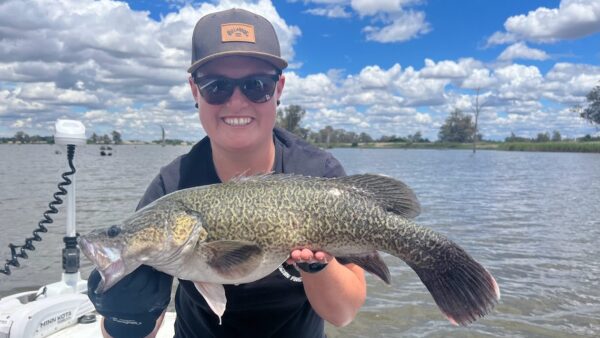
Lure Choice
There is a huge range of lure available to target Murray cod. Surface lures are very popular and work well in low light periods and calm water by creating ripples and a swimming action on top of the water. Cast surface lures to the bank of the edge of the snag you are targeting and retrieve them at a speed where they create a rhythmic sound.
Wakebaits work in a very similar fashion to surface lures however they swim just below the surface and instead of paddling across, they leave a wake behind them. These are great when you want to fish the surface and are having no success. It could be the noise of the surface lure is deterring fish or the cod won’t commit to eating a surface presentation. A wakebait may be just the required encouragement.
Floating hard bodies with diving bibs can often be used in heavy timber and come in a range of depths. Cast them to the structure you wish to fish and work them down. If you feel the bib bump a snag, stop winding briefly to allow the lure to float up and over the snag then continue your retrieve.
Crankbaits and vibes are also a great option and can be retrieved with a slow roll to give them action, however the treble hooks can snag easily as they are exposed.
Swimbaits are life-like and can be cast unweighted to swim just below the surface or the weight can be varied by adding on chin weights to achieve the desired depth. A very slow retrieval is preferred to simulate a slow moving or wounded fish. The downside here is the exposed hooks and often swimbaits are costly to lose.
Soft plastics have the same benefits as a swimbait of being able to vary the weights and slowly roll them to be life-like and are often a cheaper option. Soft plastics can be purchased pre rigged with either treble hooks or in a weedless design. Treble hooks do have a better hook up rate, however they are prone to snags. Whereas weedless hooks you can work into the hardest of timber, with the compromise being a lower hook up rate.
Spinnerbaits are perhaps the balance of hook up rate and snag resistance for most applications. They have a wire form with a spinning blade in an angle that protects the hook and allows the spinnerbait to hop over most snags. You can usually feel the blade’s vibration which gives you an idea of how your lure is swimming through the water as well.
Ultimately, if you are targeting Murray Cod, snags are inevitable. Don’t give up or feel that you are doing anything wrong, it’s just part of cod fishing. A lure retriever is a fantastic investment for Murray cod fishos.
When choosing lure sizes, keep in mind that Murray Cod will eat massive baits. It’s not uncommon to catch a 50cm model on a 7 inch soft plastic, so don’t be intimidated by those bigger looking cod lures. That being said, they are heavy and it’s easy to fatigue, so if you are planning to cast for a long session, choose something you feel comfortable enough to put in hundreds of casts with.
If you are fishing in winter for bigger Murray Cod, bigger lures are preferable to try to tempt cod into a bite. Popular cod lures tend to range between 80-250mm. I have also heard it said ‘elephants eat peanuts’ and my biggest cod to date came from a single Colorado bladed 1oz spinnerbait.
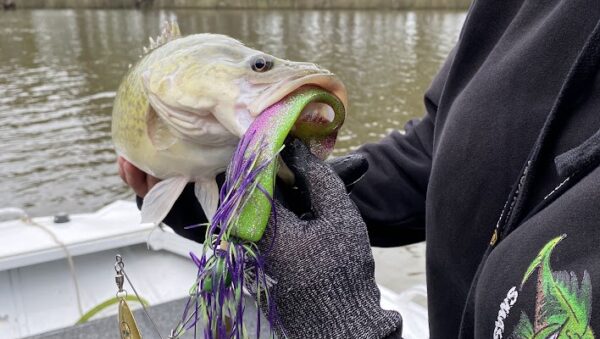
Spinnerbaits are effective lures for targeting Murray cod
In terms of choosing a colour, I always try to stick to the guide of darker cloudy day, dark colour, sunny day, light colour. A good option to get started is to take a dark colour, a natural colour and a bright colour and trial them to see what works best. If the area you are fishing has dirty water with very poor visibility, a bright colour can be a great choice.

Trolling
Trolling lures is also an effective option to cover ground in search of Murray Cod. The best lures to troll are diving hard bodies and spinnerbaits. Aim to troll at around about the 2.5kph-3kph range with hardbodies and this can be slowed right down to about 2kph-2.5ph with spinnerbaits and still create the desired swim action. Trolling right along the snags as well as the edges of channels is a productive option and where possible, holding your rod will help to prevent snags.
With diving lures, hold the rod tip forward. If you feel the lure hit structure, angle the rod back to create slack line and allow the lure to rise over the snag. With spinnerbaits you can do the opposite. If you feel the lure hit structure you can often pull it tighter to hop the lure over the snag.

The Technical Stuff
Murray cod tend to come on the bite more often in stable weather conditions with periods of fine weather. There is a debate to be had about the effects of barometric pressure on cod bite windows. Some cod anglers swear by ‘1020 fish a plenty’, but stability in the system you intend to fish is more important for regular bite windows. I have found that before a storm, cod will feed, whereas after a rain event, they tend to be shut down and difficult to entice.
Major changes in inflow and outflow are also known to shut down cod feeding as they create instability in water temperature as well as clarity.
The moon has been noted to have an effect on bite windows for Murray cod. Moon rise, moon above, moon set and moon below are good guides to key bite times and if you are planning to only fish for a short time, these times as well as the change of light periods are the key times to factor into your trips.
The Wrap Up
Murray Cod are a spectacular fish and are every bit worth the effort and care to protect them moving forward. They are notoriously fickle in their feeding habits and whilst you can do everything in your power to try to tempt these giants, sometimes that is simply best laid plans. Donut days do occur frequently, don’t be discouraged by your efforts, it will come together.
Perhaps the most difficult factor with cod fishing is the amount of feedback you receive, cod are not a fish that will often nibble a line. They will hit hard or not at all which leaves you wondering if you are doing the right things. Keep on chasing those greenbacks and you will be rewarded. Interactions with these giants are special and each one leaves me with a feeling of awe towards this species.
Tight lines!
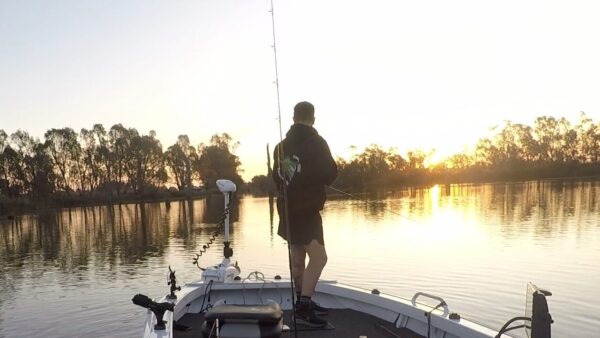
To learn more about Murray Cod, visit the VFAs Rec Fishing Guide page.

